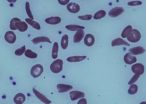(Press-News.org) Despite strong preclinical data, the drug everolimus failed to improve overall survival in patients with advanced liver cancer, compared to placebo, according to a study in the July 2 issue of JAMA.
Patients with advanced hepatocellular carcinoma (HCC; a type of liver cancer) have a median overall survival of less than l year, largely because of the absence of effective therapies. The drug sorafenib is the only systemic therapy shown to significantly improve overall survival in advanced HCC; however its benefits are mostly transient and modest, and disease eventually progresses. In preclinical models, everolimus prevented tumor progression and improved survival, according to background information in the article.
Andrew X. Zhu, M.D., Ph.D., of the Massachusetts General Hospital Cancer Center, Harvard Medical School, Boston, and colleagues randomly assigned 546 adults with advanced HCC whose disease progressed during or after sorafenib or who were intolerant of sorafenib to receive everolimus (n = 362) or placebo (n = 184), both given in combination with best supportive care and continued until disease progression or intolerable toxicity. In this phase 3 study, patients were enrolled from 17 countries between May 2010 and March 2012.
The researchers found no significant difference in overall survival between the two groups: there were 303 deaths (83.7 percent) in the everolimus group and 151 deaths (82.1 percent) in the placebo group. Median overall survival was 7.6 months with everolimus, 7.3 months with placebo. The disease control rate (the percentage of patients with a best overall response of complete or partial response or stable disease) was 56.1 percent (everolimus) and 45.1 percent (placebo).
"The results from [this study, EVOLVE-1] extend the list of failed phase 3 studies in advanced HCC, highlighting the challenge of developing effective therapies for this cancer," the authors write.
The researchers note that EVOLVE-l and the other failed phase 3 studies have provided several important lessons, including that it is difficult to assess efficacy signals from phase 2 trials; surrogate end points such as time to progression, progression-free survival, and response rate inconsistently predict overall survival in phase 3 trials; and clinical and biologic heterogeneity likely affects the performance of targeted therapies in HCC. "In the absence of well-characterized and validated predictive bio-markers, targeted agents will likely continue to have a high risk of failure if phase 3 trials are conducted in unselected populations."
INFORMATION:
(doi:10.1001/jama.2014.7189; Available pre-embargo to the media at http://media.jamanetwork.com)
Editor's Note: Please see the article for additional information, including other authors, author contributions and affiliations, financial disclosures, funding and support, etc.
Drug everolimus does not improve overall survival in patients with advanced liver cancer
2014-07-01
ELSE PRESS RELEASES FROM THIS DATE:
Study examines neurological outcomes for TBI treatments
2014-07-01
In patients with a traumatic brain injury (TBI), neither the administration of the hormone erythropoietin (EPO) or maintaining a higher hemoglobin concentration through blood transfusion resulted in improved neurological outcome at 6 months, according to a study in the July 2 issue of JAMA. Transfusing at higher hemoglobin concentrations was associated with a higher risk of adverse events.
Patients with severe traumatic brain injury commonly develop anemia. For patients with neurological injury, anemia is a potential cause of secondary injury, which may worsen neurological ...
Whole-exome sequencing helpful to id gene mutations linked to nervous system diseases
2014-07-01
Use of exome sequencing improved the ability to identify the underlying gene mutations in patients with biochemically defined defects affecting multiple mitochondrial respiratory chain complexes (enzymes that are involved in basic energy production), according to a study in the July 2 issue of JAMA.
Defects of the mitochondrial respiratory chain have emerged as the most common cause of childhood and adult neurometabolic disease, with an estimated prevalence of l in 5,000 live births. Clinically these disorders can present at any time of life, are often seen in association ...
Medicare-backed breast cancer screenings skyrocket, but do patients benefit?
2014-07-01
Breast cancer screening costs for Medicare patients skyrocketed between 2001 and 2009, but the increase did not lead to earlier detection of new breast cancer cases, according to a study published by Yale School of Medicine researchers in the July 1 Journal of the National Cancer Institute.
While the number of screening mammograms performed among Medicare patients remained stable during the same time period, the study focused on the adoption of newer imaging technologies in the Medicare population, such as digital mammography. Brigid Killelea, M.D., assistant professor ...
Adults stop anti-rejection drugs after stem-cell transplant reverses sickle cell disease
2014-07-01
Adults stop anti-rejection drugs after stem-cell transplant reverses sickle cell disease
NIH trial success suggests a new treatment option for older, sicker patients
Half of patients in a trial have safely stopped immunosuppressant medication following a modified blood stem-cell transplant for severe sickle cell disease, according to a study in the July 1 issue of the Journal of the American Medical Association. The trial was conducted at the National Institutes of Health's Clinical Center in Bethesda, Maryland, by researchers from NIH's National Institute of Diabetes ...
Seeing your true colors: Standards for hyperspectral imaging
2014-07-01
Today, doctors who really want to see if a wound is healing have to do a biopsy or some other invasive technique that, besides injuring an already injured patient, can really only offer information about a small area. But a technology called hyperspectral imaging offers doctors a noninvasive, painless way to discriminate between healthy and diseased tissue and reveal how well damaged tissue is healing over a wide area. The catch? A lack of calibration standards is impeding its use.
After a successful non-human trial, researchers at the National Institute of Standards ...
New NIST metamaterial gives light a one-way ticket
2014-07-01
The light-warping structures known as metamaterials have a new trick in their ever-expanding repertoire. Researchers at the National Institute of Standards and Technology (NIST) have built a silver, glass and chromium nanostructure that can all but stop visible light cold in one direction while giving it a pass in the other.* The device could someday play a role in optical information processing and in novel biosensing devices.
In recent years, scientists have designed nanostructured materials that allow microwave or infrared light to propagate in only one direction. ...
Fear, not data, motivates sunscreen users, research shows
2014-07-01
BUFFALO, N.Y. – We're often told that worrying can be harmful to one's health. But University at Buffalo researchers say that when it comes to preventing skin cancer, a little fear is good for you.
In a study published in the Journal of Behavioral Medicine, the UB researchers found that fear and worry about skin cancer had a bigger influence on people's use of sunscreen than information about the statistical likelihood of developing the disease.
"Most health behavior studies don't account for the more visceral, emotional reactions that lead people to do risky behaviors, ...
NIST test house exceeds goal; ends year with energy to spare
2014-07-01
The net-zero energy test house at the National Institute of Standards and Technology (NIST) in suburban Washington, D.C., not only absorbed winter's best shot, it came out on top, reaching its one-year anniversary on July 1 with enough surplus energy to power an electric car for about 1,440 miles.*
Watch the YouTube video at https://www.youtube.com/watch?v=iJZrOhPk4kg
Despite five months of below-average temperatures and twice the normal amount of snowfall, NIST's Net-Zero Energy Residential Test Facility (NZERTF) ended its one-year test run with 491 kilowatt hours ...
Biomarker predicts effectiveness of brain cancer treatment
2014-07-01
Researchers at the University of California, San Diego School of Medicine have identified a new biomarker that predicts whether glioblastoma – the most common form of primary brain cancer – will respond to chemotherapy. The findings are published in the July print issue of Oncotarget.
"Every patient diagnosed with glioblastoma is treated with a chemotherapy called temozolomide. About 15 percent of these patients derive long-lasting benefit," said Clark C. Chen, MD, PhD, vice-chairman of Academic Affairs, Division of Neurosurgery, UC San Diego School of Medicine and the ...
Plants respond to leaf vibrations caused by insects' chewing, MU study finds
2014-07-01
VIDEO:
Experiments by Heidi Appel and Rex Cocroft at the University of Missouri mark the first time scientists have shown that a plant responds to an ecologically relevant sound in its...
Click here for more information.
COLUMBIA, Mo. – Previous studies have suggested that plant growth can be influenced by sound and that plants respond to wind and touch. Now, researchers at the University of Missouri, in a collaboration that brings together audio and chemical analysis, have ...





